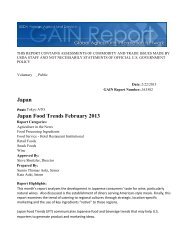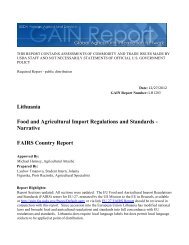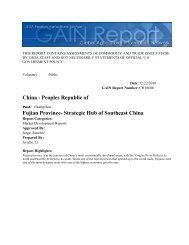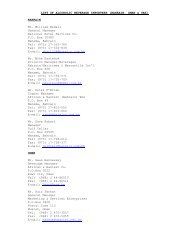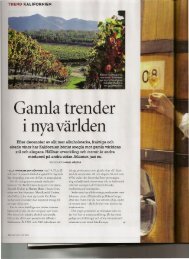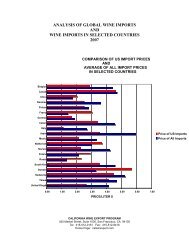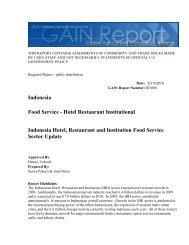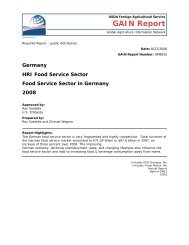Brazil Wine Market Report JBC EMP July 2011 - California Wine ...
Brazil Wine Market Report JBC EMP July 2011 - California Wine ...
Brazil Wine Market Report JBC EMP July 2011 - California Wine ...
You also want an ePaper? Increase the reach of your titles
YUMPU automatically turns print PDFs into web optimized ePapers that Google loves.
46<br />
<strong>Brazil</strong>ian <strong>Wine</strong> <strong>Market</strong> <strong>Report</strong><br />
Article 49. Flavoring is to add aromatic substances to wine and the grape and wine, when<br />
provided in the standard of identity and quality, with the aim of improving their sensory<br />
characteristics or to provide new features.<br />
Article 50. Court or assemblage consists in mixing different wines with the goal of producing<br />
wines physicochemical and sensory characteristics desired.<br />
Article 51. Bottling heat is to bottle the wine warmed and close the bottle immediately in<br />
order to promote stability and physical organic chemistry and wine<br />
elimination of oxygen.<br />
Paragraph 1. The heating temperature can not exceed forty-five degrees Celsius.<br />
Article 52. Aeration is to introduce air or specific gas to wine in order to reduce the content<br />
of iron and remove any traces of hydrogen sulfide in the wine.<br />
Paragraph 1. Removing the bad smell or taste due to hydrogen or sulfur derivatives<br />
can be done with the help of substance authorized by specific legislation.<br />
Article 53. Partial dehydration or concentration of the wine is to concentrate the wine by<br />
removing endogenous water in order to increase the alcoholic strength of wine.<br />
§ 1 The partial dehydration or concentration of the wine can be obtained through the<br />
following procedures:<br />
I - reverse osmosis or reverse: the must pass specific membrane under the<br />
action of a pressure higher than the osmotic pressure of the wort;<br />
II - partial vacuum evaporation, vacuum heat subjected to sharp;<br />
III - partial evaporation under atmospheric pressure: evaporation system at<br />
atmospheric pressure, or<br />
IV - create concentration: partial freeze and elimination of the ice formed.<br />
§ 2 It is prohibited to partial dehydration of wine when the wine that gave rise have<br />
been submitted the same practice.<br />
§ 3 The concentration can not lead to a reduction of more than twenty percent of the<br />
initial volume or increase more than two percent of the initial alcohol content of<br />
wine.<br />
Article 54. Maturation in wooden vessel is to pack the wine in wooden barrels<br />
appropriate, with a maximum capacity of six hundred liters (maturation), in order to:<br />
I - get a natural evolutionary process of wine, with the development of their<br />
characteristics sensory;<br />
II - to promote the physical and chemical mechanisms due to natural oxygen intake<br />
and the progressive substances provided by the timber, and<br />
III - to obtain physical-chemical stabilization of all or part of the wine.<br />
Article 55. Thinning is to put the wine in contact with wood during a period determined by<br />
the addition of wood chips of the species Quercus sp. With the aim of pass the wine,<br />
constituents from the oak.<br />
§ 1 The oak chips must meet the following requirements:<br />
a) be used fresh or roasted, without having sustained combustion;<br />
b) not be added to products to increase their natural flavor or their<br />
extractable phenolic compounds;<br />
c) has not undergone any chemical, enzymatic or physical, except the towers:



